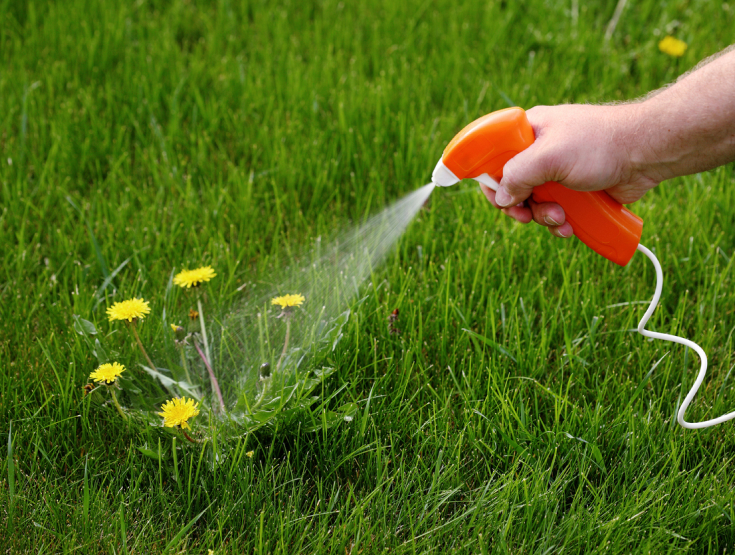Sometimes, a stubborn weed infestation calls for more serious tactics. Herbicides, when used correctly, offer a targeted approach that helps you remove dandelions without damaging the rest of your lawn. These products are specifically formulated to attack broadleaf weeds, making them highly effective against dandelions. Herbicides can be a convenient choice when dandelions have grown out of control or keep returning despite your best efforts.
Choosing the Right Herbicide
Using the correct product is crucial for dandelion control. Herbicides come in two main categories:
- Selective herbicides: These target broadleaf weeds, leaving your grass relatively unharmed. They work by disrupting specific plant processes, making them ideal for dandelions invading your turf.
- Non-selective herbicides: These destroy nearly any plant they contact. You’d typically reserve these for areas where you don’t mind harming other vegetation or when you plan to reseed.
Pre-emergent herbicides deserve special mention. These products don’t kill established weeds but stop new dandelion seeds from sprouting. Applying a pre-emergent treatment in early spring or late winter can help prevent dandelions before they take root, giving your lawn a decisive advantage.
Application Best Practices
To get the most from an herbicide application, timing and technique matter:
- Apply during growth periods: Early spring or fall is often the best time to treat dandelions when they’re actively storing nutrients in their roots.
- Follow label instructions: Pay attention to dosages, application rates and safety precautions. Wear protective equipment to avoid accidental exposure.
- Target specific areas: Focus on the weeds themselves instead of the entire yard — especially if you’re using a non-selective product.
- Avoid overuse: Applying too much herbicide can stress or kill healthy turf.
When used correctly, chemical methods can effectively knock out a serious dandelion invasion. If you’re seeking a long-lasting solution, call TruGreen about professional lawn care services tailored to your yard’s unique needs.


 Branch Finder
Branch Finder













 Back to all blogs
Back to all blogs

Facebook
X
Youtube
Copy Link
Email